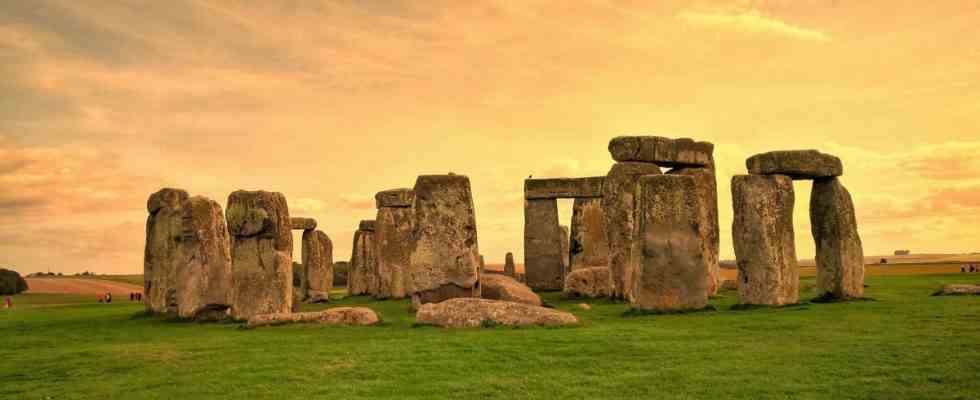What was all this about? More than 4,000 years ago, people in the south of what is now England put up dozens of stone blocks in what is believed to be a very strenuous process. They erected five gate structures arranged in the shape of a horseshoe. Around the outside they placed a circle of 30 huge sandstones, and on each of two of these blocks they placed a cross-stone weighing several tons.
Stonehenge, not far from present-day Salisbury, is the most famous Neolithic megalithic monument in Europe. But why all the effort? Generations of visitors and scholars have analyzed the structure and speculated as to its purpose. But there is still a long way to go.
The latest suggestion comes from British archaeologist Timothy Darvill. It reads: The Stone Age people set up an amazingly precise solar calendar with the stone circle. Like Darvill in the renowned trade journal last year antique explained the 30 stones in the outer ring could each stand for a day of a solar month. All of Stonehenge is aligned with the sun at the summer and winter solstices; the year would therefore probably have begun with the winter solstice. Twelve runs of the outer ring would result in 360 days, plus the five goals in the middle, makes 365.
There are also four corner stones at the edge of the complex, which is a reference to a leap day every four years. A Stone Age year would therefore already have had 365.25 days – which corresponds amazingly exactly to the Julian calendar and the Gregorian calendar that is still in use today. The builders of these calendars got their inspiration from Egypt, and the archaeologist wrote that one should not underestimate the information networks of the past. But can all this really be?
Stonehenge would be too imprecise as a calendar
Probably not, say the two archaeoastronomers Giulio Magli from the University of Politecnico di Milano and Juan Antonio Belmonte from the Universidad de La Laguna on Tenerife. In the journal, they explain why antique. You are criticizing three things. On the one hand, certain numbers were arbitrarily chosen to support the calendar thesis. He didn’t take into account what didn’t fit Darvill’s idea. And the number twelve, which is decisive for the presumed calendar, is nowhere to be found; so how should people have counted the months?
In addition, the mentioned Egyptian administrative calendar – the dating of which is disputed – had 365 days, but knew no leap days, which have only existed since the Julian calendar reform in the first century BC. And above all, no one could have put such a calendar to good use, argue Magli and Belmonte. In order to be able to determine the exact days of the solstices and winter solstices, people should have been able to use the stones to determine the position of the sun to within a tenth of a degree – but they could not.
But what else was Stonehenge for? According to the two researchers, the complex is initially a silent testimony to the Neolithic cult landscape, because in Neolithic society connections between the winter solstice and the afterlife could be traced again and again. Otherwise, they warn against steep theses and urge restraint. So Stonehenge will remain a mystery.

